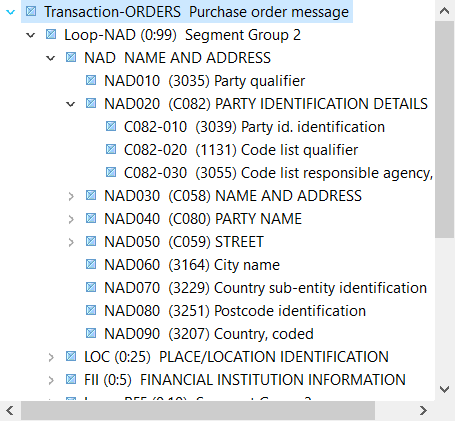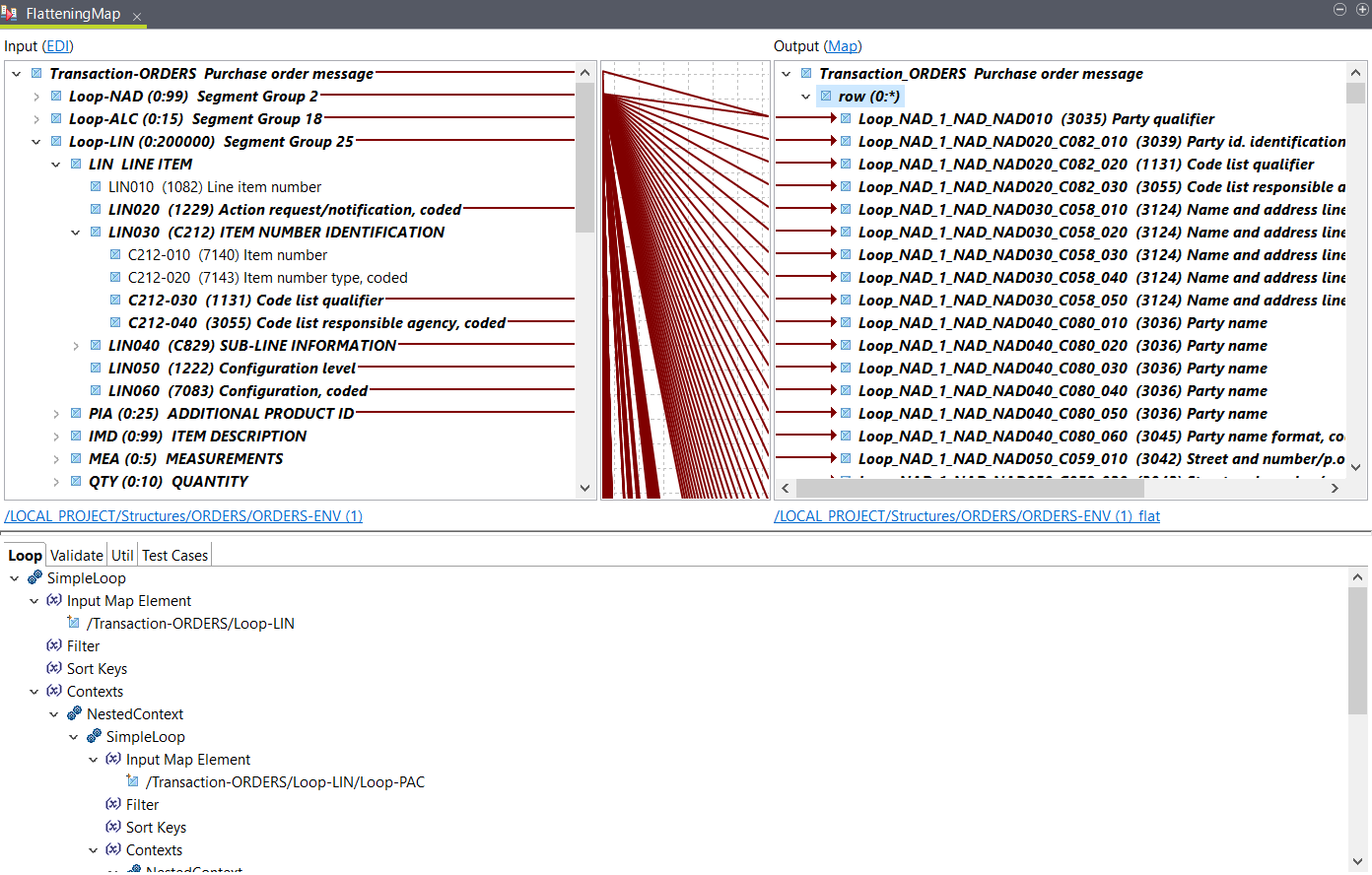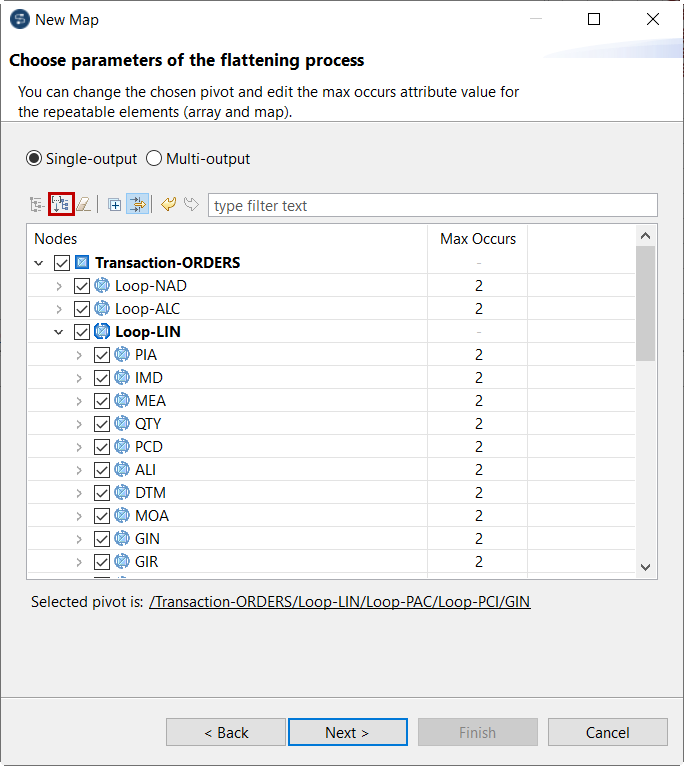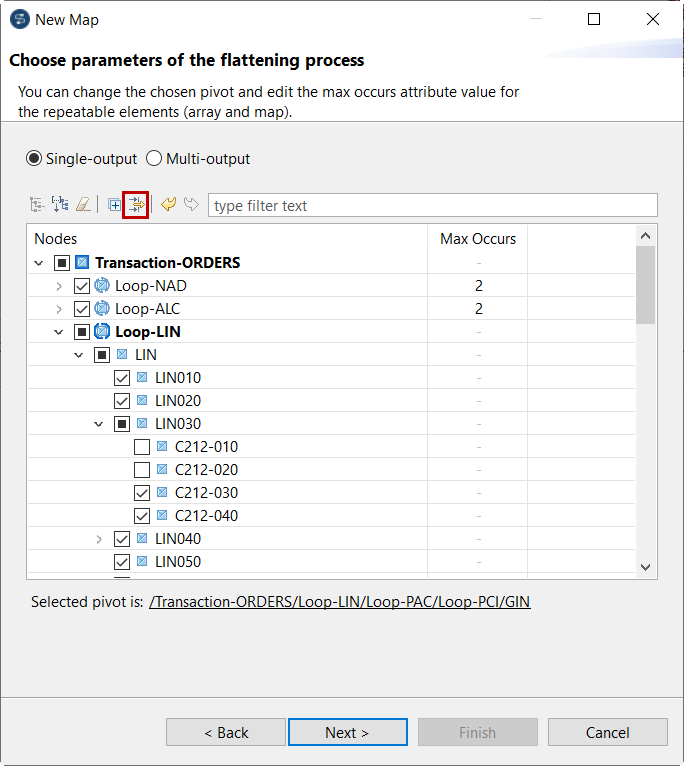Creating a flattening map with a single output
Before you begin
- You have created a hierarchical structure.
About this task
In this example, the input hierarchical structure looks like this:

Procedure
Results
Your map and your flattened output structure are created in the selected folders. The map opens and the elements from the input structure are automatically mapped with the elements in the flat output structure.
In this example, it looks like this:

If you selected Create a Studio schema from the
flattened structure, a schema containing the same columns is
created. You can find it in your Repository
in the
Integration
perspective, under .


Did this page help you?
If you find any issues with this page or its content – a typo, a missing step, or a technical error – let us know how we can improve!


